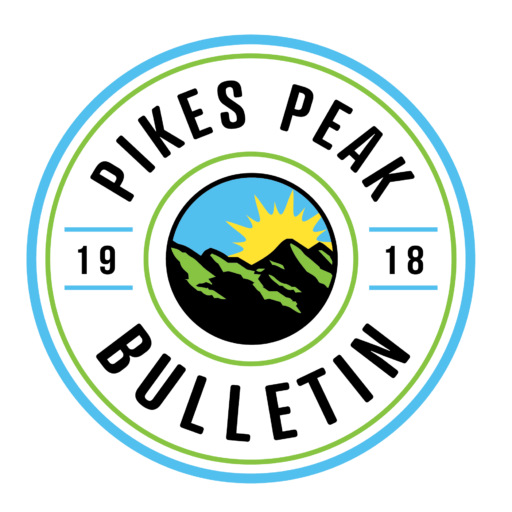The proposed Old Colorado City Downtown Development Authority has a beguiling name. We Westsiders love OCC, want it to flourish and hope that OCC voters will endorse it.
Here are the boundaries: Colorado Avenue from I-25 to the boundary with Manitou Springs, along with some adjacent properties, and some more in the current OCC Special Improvement Maintenance District and in the I-25 Gateway.
But mainly, it’s all about Colorado Avenue. That’s a great idea, one that celebrates both OCC and the historic roadway that we all take for granted.
Colorado Avenue’s long history predates that of Old Colorado City, not by decades but by millennia. Animals and humans followed footpaths and wagon roads near and along Fountain Creek for many centuries. Yet it’s clear that a site in Manitou Springs was the most sought-after destination for Native Americans and early explorers. They called it La Fountaine qui Bouille, the Boiling Spring.
“The Boiling Spring is a large and beautiful fountain of water, cool and transparent, and highly aerated with carbonic acid,” wrote the botanist Edwin James in his account of the 1820 Long expedition to the Rocky Mountains.
James and his party reached the Spring on July 13th, and noted that others had preceded him, writing, “In the bottom of both these Springs a great number of beads and small articles of ornament were found, having been left there by (Indigenous peoples) as sacrifices or presents to the Springs, which are regarded with veneration.”
The Spring wasn’t their ultimate destination, though it would be the base camp for the first recorded ascent of the yet-unnamed great peak to the west. Leaving camp that afternoon, a small party headed by James reached the summit of the great peak on the 15th. It was calm and clear, 42 degrees, but the climbers were “surprised to observe the air in every direction filled with such clouds of grasshoppers as partially to obscure the day.” For a while the peak was named after him, but it gradually reverted to Pikes Peak.
Three decades later George Ruxton camped next to the Boiling Spring (maybe – Ruxton was a noted fabulist!) and described his visit in “Life in the Far West.”
“Spite of the reputed dangers of the locality, the trappers camped on the spot, and many a draught of the delicious sparkling water they quaffed in honour of the ‘medicine’ of the fount,” he wrote.
The avenue defines us.
Whatever his faults Ruxton seems to have had fun – fair enough, since he died at 27.
According to Irving Howbert, who came to Colorado City in 1860, the wagon road from the mountains to present-day Manitou ran down the “old Indian trail from Cascade, running down the hills from a quarter to half mile south of the creek.”
The advent of the automobile changed the Avenue, especially when the shelf road next to Fountain Creek was built, creating a quick and easy route to the mountains. Springs author Marshall Sprague, whose first car was a 1931 Ford Model A Roadster, loved ripping up the pass in the Model A, especially when he was writing his best-selling history of Cripple Creek, “Money Mountain.”
During the next 164 years, Colorado Avenue would thrive and change. Railroads would run beside it, a great city would emerge from the plains and foothills that served it, generations would come and go, and the road would host travelers, commuters, bikers, horsemen, trolley cars, automobiles, trucks and walkers. Prairie Dog O’Byrne would drive his harnessed elk, Thunder and Buttons, down the Avenue in the wild days of Colorado City at the turn of the 19th century, while bawdy saloons attracted residents of teetotalling Colorado Springs.
But, as OCC savior Dave Hughes pointed out in the now-vanished weekly newspaper the Westside Pioneer, “General Palmer, disliking Colorado City, refused to name his street extending westward [as] Colorado Avenue. He named it Huerfano to Limit Street from downtown. Not until he was long dead and Colorado City was dissolved and annexed in 1917 did Colorado Springs rename Huerfano to Colorado Avenue all the way to the western city limit of Colorado Springs.”
But who cares about the name? Today, the Avenue is as much fun as ever, particularly since Highway 24 became the preferred route to the mountains. OCC would be forlorn indeed without our beloved main drag.
After 25 years in the neighborhood, the Avenue defines us. We mourn the businesses that have closed and celebrate the new ones. We complain about traffic, but what the hell – I’m too unsteady to bike, too old to hike, but still ready to dine & drink…so let’s hit the Avenue!
And a final note: we don’t have a road song. Irving Berlin honored Fifth Avenue in Easter Parade, Jan & Dean honored Colorado Boulevard in The Little Old Lady from Pasadena, and we’re stuck with John Denver’s stoner ballad Rocky Mountain High. Maybe we could replace it with Willie Nelson’s On The Road Again…

